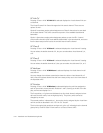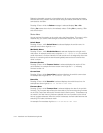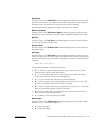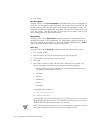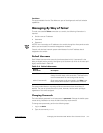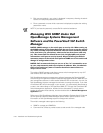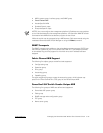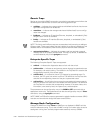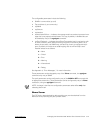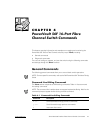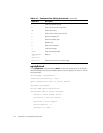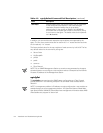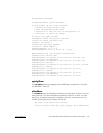
3-20 Installation and Troubleshooting Guide
%
Setting up the switch’s SNMP connection to an existing managed network allows the
network system administrator to receive the following generic traps:
coldStart — Indicates the manage node has reinitialized itself such that the man-
age node’s configuration can be altered.
warmStart — Indicates the manage node has reinitialized itself, but no configu-
ration has changed.
linkDown — Indicates an IP interface (Ethernet, loop back, or embedded N_Port)
has gone down and is not available.
linkUp — Indicates an IP interface (Ethernet, loop back, or embedded N_Port)
has become available.
NOTE: The linkUp and linkDown traps are not associated with removing or adding an
Ethernet cable. These traps indicate that the interface is configured, operational, and
available and do not necessarily mean that the physical network cable is affected.
authenticationFailure — Indicates the manage node has received a protocol
message that is not properly authenticated. This trap, by default, is disabled but
can be enabled by way of the command.
6%%%
The following Enterprise Specific Traps are supported:
swFault — Indicates the diagnostics detect a fault with the switch.
swSensorScn — Indicates an environment sensor changes its operational state.
For example; a fan stops working. The VarBind in the Trap Data Unit contains the
corresponding instance of the sensor status.
swFCPortScn — A notification that an FCP changes its operational state. For
instance, the FCP goes from online to off-line. The VarBind in the Trap Data Unit
contains the corresponding instance of the port's operational status.
swEventTrap — A notification that an event has occurred and its event severity
level is at or below the value set in the variable swEventTrapLevel. The VarBind in
the Trap Data Unit contains the corresponding instance of the event index, time
information, event severity level, the repeat count, and description.
The parameters can be configured by way of the SNMPv1 SET command with an
appropriate community. These parameters can also be configured by way of a Te l n e t
connection, using the agtcfgSet command.
NOTE: SNMP swFCPortScn traps are generated on gigabit interface converter (GBIC)
insertion and removal even though the state remains offline.
"'
Changes to SNMP from either Te l n e t or SNMP are not displayed in SNMP until the
switch is rebooted running. This is due to SNMP running from cache while the active
settings are running from the flash programmable read-only memory (PROM).



